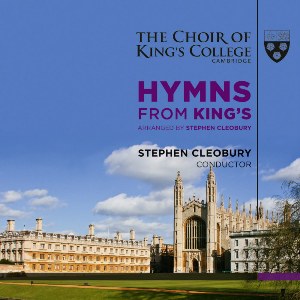For most people these days, Protestant church hymns are obscure, unfamiliar, and irrelevant. But for those who know them, who grew up with them, for whom their tunes and poetry and unique language continue to describe and inform a shared community of believers, invoking and inspiring deep responses, both emotional and spiritual, hymns are the embodiment of religious expression and the tie that binds more strongly and immediately than any sermon or bible verse recitation.
I’m speaking particularly of the vast body of hymns that came into being during the 18th, 19th, and early 20th centuries, springing primarily from the Methodist, Baptist, Presbyterian, and Anglican churches, religious songs whose poetic texts spoke profoundly and whose tunes had their own unique names, like Abbot’s Leigh and Slane, St. George’s Windsor, Saffron Waldon, Forest Green, Dix, Down Ampney, Monk’s Gate, Rockingham, Old 100th, Calvary, Duke Street, Crusader’s Hymn, Eventide, Sine nomine, and those wonderful Welsh names like Hyfrydol, Rhosymedre, and Cwm Rhondda. Today’s code-rich popular culture has nothing on the hymn-world!
However, there’s understandable confusion today when it comes to what is meant by “hymn”. Originally, for instance in the works of celebrated writers such as Charles Wesley and Isaac Watts, it meant the poetry, the words that embodied the theological principle or sentiment in the meaningful language of the brethern, the congregation, the believers. The tune was a separate thing. Indeed, given the metrical organization of a given text, more than one tune might be suitable—and today’s hymn-books are full of examples, illustrated in the “metrical index of tunes” always found in the back of the book, providing a key for anyone looking for alternative melodies for a particular set of words.
One example here rises above the rest: the lesser-known tune Saffron Walden is sung to the beloved Charlotte Elliott text, “Just as I am, without one plea”, which since the 19th century has been virtually owned by a tune called Woodworth. Too bad conductor Stephen Cleobury decided to take it too fast, slightly undermining the hymn’s affecting, plaintive quality, but you still can appreciate the perfect joining of words to music. Another example is Cleobury’s use of the triple-meter tune Blaenwern for the Charles Wesley hymn “Love divine, all loves excelling”, which, while a wonderful tune, probably is a third choice for this text, after Beecher (which interestingly happens to be in quadruple meter) and the aforementioned Hyfrydol.
Listeners familiar with most—or all—of the 20 hymns on the program will find it reassuring that, although these are “arrangements”, Cleobury usually preserves the well-known, “standard”, or original harmonizations for at least some of the verses, treating others to his own variants and often adding descants to the final verse. They are intended to be sung either by choir alone or with a congregation; indeed, all of them are published for church use by Peters Edition. For instance, Cleobury uses Vaughan Williams’ harmonies for most or all verses in several hymns—including “All creatures of our God and King” (Lasst uns erfreuen) and “Alleluya, sing to Jesus” (Hyfrydol); William Monk’s standard settings, notably the beloved “Abide with me” (Eventide); and John Goss’ inimitable “Praise, my soul, the king of heaven” (Praise my soul)—but always providing his personal touch in middle or final verses. This can take the form of a reworking of a theme as a descant, or, in the case of the abovementioned Saffron Waldon, a very clever and effective canonic setting of the tune in the last verse.
Like me, you may not be fully persuaded by all of Cleobury’s ideas: some of his new descants seem just obligingly tacked on, not particularly inspired (the one for the opening “Thine be the glory” meanders around a predictable track before demanding a heroic stab at a high-B from the trebles just before the end). However, most of Cleobury’s realizations are spot-on, and he has devised some especially noble descants for hymns such as Blaenwern, Praise my soul, and Angel voices. He also is to be commended for choosing two or three lesser-known tunes, such as Love Unknown (for the hymn My song is love unknown), written by John Ireland, which in terms of melodic structure and rhythm is among the more “challenging” tunes intended for congregational singing. And Cleobury really goes full out to exploit the harmonic possibilities, passing the melody around and offering a lovely descant on the last verse.
It probably goes without saying that the singing, by a legendary choir that knows these hymns in its collective sleep, is without flaw, my only note being that the King’s chapel acoustic, while wonderful for a church service, can engulf a choir on its own for a recording. You know you’re in a big space here, but after a minute or two you adjust—after all, detail isn’t so important here, as with a Byrd or Tallis motet—and in the glorious midst of the second track, Rowland Huw Prichard’s Hyfrydol—and certainly by the eighth, Cyril Vincent Taylor’s lofty Abbot’s Leigh—you embrace the grandness of the setting. If you care about hymns, the great ones, sung as well as they can be, you will be happy and moved and inspired to many repeat listenings. A pleasure.
































